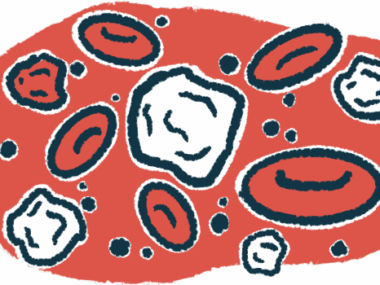Scientists create small molecules to block ‘undruggable’ protein in lupus
Immune system-targeting compound shows early promise against SLC15A4
Written by |

Scientists have created small molecules that can block the activity of SLC15A4, an inflammatory protein — long considered undruggable — that’s known to play a central role in driving lupus and other autoimmune diseases.
Further, the team showed that these molecules could reduce inflammation in lupus patient cells and in mouse models of the disease.
“This is an example of a protein that had been correlated with disease in a number of ways, including human genetics and various disease models, but no one had been able to develop small molecules to target it,” Christopher Parker, PhD, a professor at Scripps Research, in California, and senior author of the study, said in a press release.
“We not only created such a compound, but we validated that it can have therapeutic effects,” Parker said.
The study, “Chemoproteomic development of SLC15A4 inhibitors with anti-inflammatory activity,” was published in Nature Chemical Biology.
Searching for a drug for the ‘undruggable’ SLC15A4 inflammatory protein
Lupus is caused by the immune system accidentally launching an inflammatory attack against healthy cells in the body. The protein SLC15A4 is known to play important roles in driving some types of inflammation, and studies have suggested that blocking its activity may be an effective treatment strategy for lupus.
But although this protein was first characterized more than a decade ago, actually designing drugs that can block SLC15A4 has proven a major technical challenge for scientists.
According to John Teijaro, PhD, a professor at Scripps and co-senior author of the study, SLC15A4 “is an incredibly complicated protein that is embedded in very specific membranes within immune cells.”
That’s made it hard to target, Teijaro said.
“It doesn’t behave very well when you remove it from this environment, which makes it incredibly difficult to carry out most typical assays or drug screens,” Teijaro said.
Now, however, the researchers figured out how to drug this supposedly undruggable target. The team began by screening a large library of molecular probes, looking for molecules that are able to stick to the SLC15A4 protein inside of immune cells. One probe, dubbed FFF-21, was identified that could both bind to SLC15A4 and block its inflammatory functions.
Using FFF-21 as a starting point, the team then created dozens of different molecules with slight variations in their chemical structures, aiming to find a specific combination of molecular tweaks to allow maximal blocking of SLC15A4. These experiments zeroed in on a particular molecule called AJ2-30 as the best candidate.
“We developed, to our knowledge, the first inhibitors that disrupt all functions of SLC15A4, and we validated this protein as a druggable target with promising potential for the treatment of inflammatory and autoimmune conditions,” the researchers wrote.
AJ2-30 molecule must be further tested before advancing to the clinic
Further experiments showed that treatment with AJ2-30 could significantly reduce the production of inflammatory molecules in immune cells isolated from people with lupus. The small molecule also reduced inflammation in a mouse model of the disease.
“We didn’t know until now whether pharmaceutically blocking SLC15A4 could lessen some of the cellular signs of lupus, but in this paper, we showed that it does that,” Teijaro said.
The team ran a battery of molecular experiments deducing exactly how AJ2-30’s interactions with the SLC15A4 protein affect the activity of other inflammation-related proteins within immune cells to ultimately reduce inflammatory signaling. They also showed that AJ2-30 loses its anti-inflammatory properties in cells that lack the SLC15A4 protein, demonstrating that this specific protein is the target by which the new molecule blocks inflammation.
“We demonstrate that AJ2-30 substantially blunted inflammatory [signaling molecule] production both in an in vivo [in an organism] mouse model of inflammation and in lupus patient-derived immune cells, underscoring the therapeutic potential of SLC15A4 inhibitors,” the researchers wrote.
We didn’t know until now whether pharmaceutically blocking SLC15A4 could lessen some of the cellular signs of lupus, but in this paper, we showed that it does that.
They stressed, however, that additional pharmacological and safety studies will be needed to further characterize the compound before this strategy can be brought to clinical testing.
The team noted that molecules blocking SLC15A4 are likely to have applications beyond just lupus.
“We don’t yet have data on other diseases, but we suspect that there are a number of other autoimmune diseases that a molecule like this could be effective for,” Teijaro said.
According to the team, this study also provides a feasible approach for how to create a drug for a hitherto undruggable target, which could be applied for other hard-to-target proteins.
Parker added that this work “not only helps move forward research on SLC15A4, but also validates our overall approach.
“This general strategy can be applied to lots of other challenging drug targets,” Parker said.







